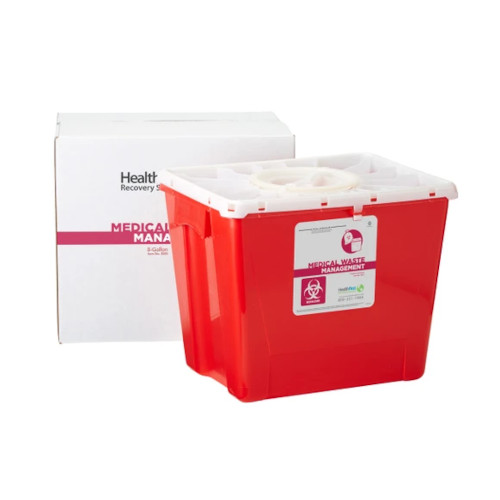Safe and Secure: The Definitive Choice for Specialist Medical Waste Removal Solutions
Discovering Various Waste Disposal Options for a Cleanser Setting
In the search of a cleaner environment, the management of garbage disposal has become an important focal point for lasting development. With a plethora of garbage disposal choices readily available, ranging from traditional garbage dump techniques to cutting-edge waste-to-energy modern technologies, the selection of just how we handle our waste has significant implications for our world's well-being. By taking a look at the various approaches and methods employed in recycling, composting, incineration, landfill administration, and waste-to-energy procedures, a deeper understanding of their impacts and efficiency can be gotten. The mission for optimum waste disposal techniques that focus on environmental preservation while satisfying the demands of a growing populace stays a pressing issue in today's globe.
Recycling Methods
Executing effective recycling approaches is critical in decreasing waste and advertising sustainability in our atmosphere. Reusing includes the procedure of converting waste materials right into recyclable challenge stop unneeded disposal. One of one of the most common recycling techniques is material recovery, where materials like paper, metal, plastic, and glass are gathered, arranged, and refined to produce new products. This process not only conserves all-natural sources however additionally reduces energy consumption and greenhouse gas discharges related to creating new products from square one.
Another important recycling approach is composting, which includes decaying natural waste like food scraps and lawn trimmings right into nutrient-rich dirt. By including these various reusing approaches right into our waste administration practices, we can considerably minimize our ecological impact and move towards a more sustainable future.

Composting Methods
Reliable waste administration techniques, such as reusing approaches, lead the means for a cleaner setting, and currently, moving the focus to 'Composting Techniques', we discover lasting ways to disintegrate organic waste for environmental advantage. medical waste disposal.
Composting is an all-natural process that transforms natural waste, like food scraps and yard trimmings, right into a nutrient-rich soil amendment. The secret to successful composting exists in creating the appropriate balance of eco-friendly materials, such as vegetables and fruit scraps, and brownish materials, like dried out twigs and leaves. These products disintegrate with the assistance of microbes, damaging down the waste into useful compost.
There are numerous composting strategies offered to match various requirements. Typical backyard composting involves layering natural products in a bin or stack and frequently transforming the mixture to freshen it. Vermicomposting, on the other hand, utilizes worms to damage down raw material into garden compost (click here). For those with limited area, interior composting systems provide a practical solution. By making use of composting methods, we can minimize the amount of waste sent to land fills while developing a beneficial item for improving soil and sustaining plant growth.
Incineration Pros and Cons
Incineration, as a waste disposal method, provides both benefits and negative aspects that merit cautious factor to consider in the realm of lasting waste management methods. On the positive side, incineration can considerably reduce the quantity of waste, decreasing the demand for land fill room and possibly lowering greenhouse gas exhausts.
Nonetheless, there are notable drawbacks to incineration. One major issue is the prospective release of hazardous toxins into the air, such as dioxins, hefty metals, and particle issue, which can have negative effects on human wellness and the atmosphere. Additionally, the high initial investment and operational prices of incineration centers present economic obstacles, making it a much less affordable alternative contrasted to other waste management strategies. Mindful surveillance and regulation are necessary to alleviate these adverse effects and optimize the advantages of incineration as part of a detailed waste monitoring method.
Landfill Monitoring Techniques
Land fills play a crucial duty in waste management and environmental conservation by offering a containment system for the disposal of strong waste products. By compacting the waste, the volume is reduced, allowing for more waste to be suited over time.
Furthermore, the implementation of daily cover methods is essential in lessening smells, protecting against trash, and reducing the attraction of parasites. Treatment the disposed waste at the end of every day aids to include odors and stop prospective ecological contamination. In addition, the monitoring of land fill gas discharges and leachate degrees is critical in making sure that ecological criteria are fulfilled and that any prospective threats to bordering environments are minimized.

Waste-to-Energy Technologies
Among the innovative techniques to waste management involves harnessing Waste-to-Energy modern technologies to transform solid waste right into functional power sources. Waste-to-Energy (WtE) innovations incorporate a series of procedures that intend to remove power from waste materials with thermal, chemical, or biological means. This conversion procedure not only minimizes the volume of waste that winds up in land fills yet additionally generates beneficial power resources such as electricity, warm, or biofuels.
Incineration involves burning waste at high temperature levels to generate warmth and electrical energy. Gasification transforms waste right into a syngas, which can be utilized for power generation or chemical production.
Applying Waste-to-Energy innovations can help reduce environmental concerns related to traditional garbage disposal techniques while at the same time providing a sustainable power source. Nevertheless, cautious factor to consider should be provided to emissions control and ensuring the sustainability of feedstock materials for these modern technologies to be really helpful for a cleaner atmosphere.

Verdict
In final thought, discovering different garbage disposal alternatives such as reusing, composting, incineration, garbage dump administration, and waste-to-energy technologies is crucial for advertising a cleaner environment - click here. Each method has its own advantages and difficulties, but by using a mix of these strategies, we can function towards reducing the amount of waste that ends up in garbage dumps and ultimately contribute to an extra sustainable future for generations ahead
With a multitude of waste disposal alternatives available, ranging from traditional landfill methods to ingenious waste-to-energy modern technologies, the option of just how we manage our waste has far-reaching ramifications for our earth's well-being. medical waste removal.Incineration, as a waste disposal method, provides both benefits and disadvantages that merit cautious factor to consider in the world of sustainable waste administration practices.Land fills play next an important role in waste monitoring and environmental conservation by offering a control system for the disposal of solid waste materials. By compacting the waste, the volume is reduced, permitting for more waste to be fit over time
One of the cutting-edge methods to throw away management entails using Waste-to-Energy modern technologies to transform strong waste right into usable energy resources.